Blueprint
Marketing team hub
When planning, processes, and execution are scattered across different tools, marketing teams lose momentum, miss deadlines, and compromise content quality. This blueprint guides you through strategic and tactical steps to unify your entire marketing program in one hub—centralizing context, collaboration, and execution.
Develop | Deploy | Get a demo
Develop | Deploy | Get a demo
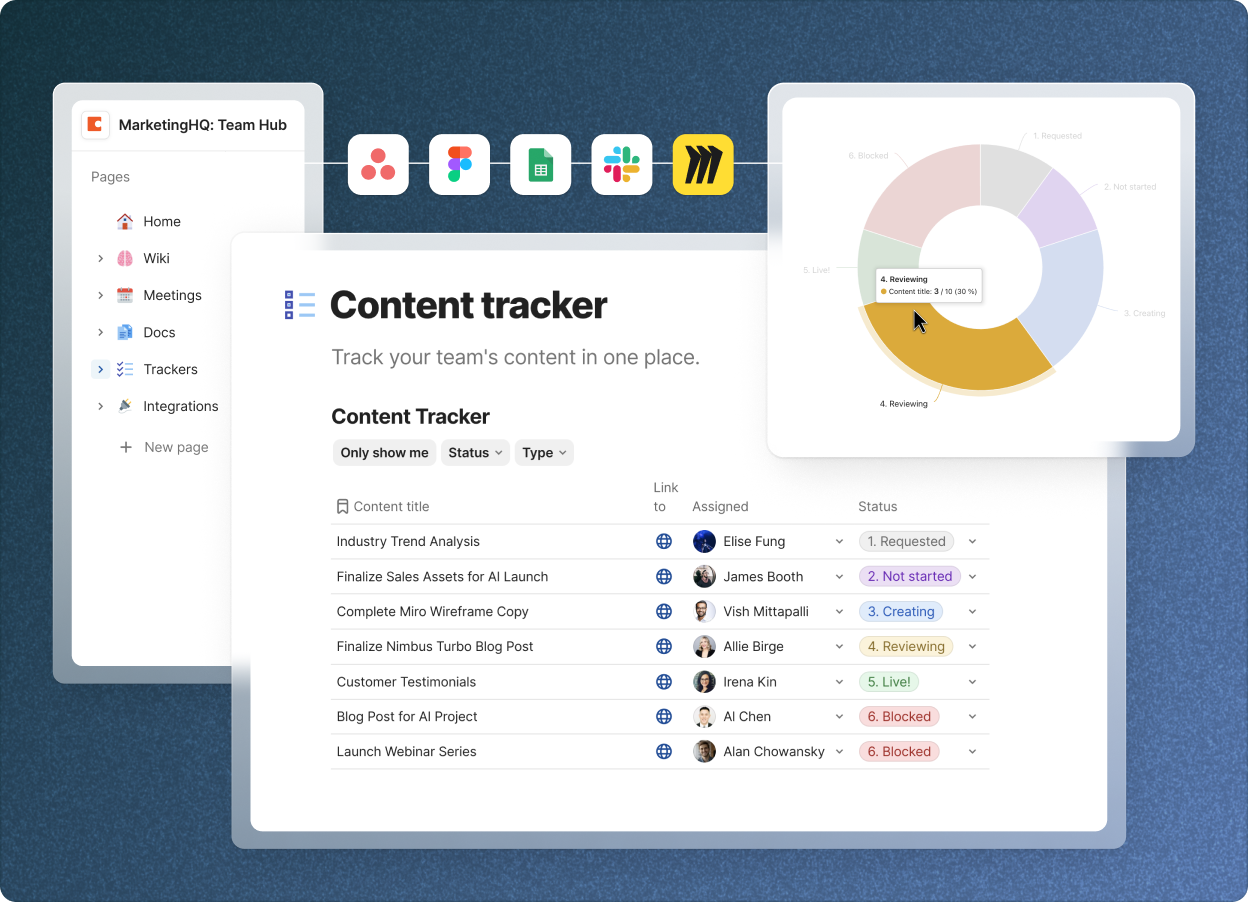
What you need
- A pilot team within your marketing department to launch the first version of your hub
- A pilot project or campaign to stress-test the hub and surface opportunities for improvement
- 15–30 minutes to set up your initial hub structure
- Integration access to your current marketing tools (e.g. project management, analytics, and content creation)
Who to work with
- Team lead from your pilot team to approve the rollout and provide strategic guidance
- Hub champion to set up the hub and support adoption across the team
- A few individual contributors to share input on workflows and ensure the hub supports daily needs
Why it matters
- A single source of truth for marketing strategy and plans keeps every campaign on message and aligned with business goals
- Centralized deliverable tracking and task management eliminate confusion and spotlight at-risk items before they derail progress
- Integrating your marketing stack reduces context switching and prevents fragmented collaboration
How to build your marketing team hub
Your marketing team hub can be as expansive, detailed, and cross-functional as you need. But to get started, focus on two essentials:
1. Choose your pilot team
While you can opt to roll out your marketing hub department-wide, starting with a single team allows you to launch small, refine processes, and build the buy-in needed for broader adoption.
When selecting your pilot team, consider these factors:
Recommendation: Start with content marketing. Content marketing teams are well positioned to be pilot teams as they often work cross-functionally, connect insights from across the organization, and work within the workflows and timelines of campaigns.
- A starting foundation of centralized context
- An end-to-end pilot project that runs from planning all the way through launch
1. Choose your pilot team
While you can opt to roll out your marketing hub department-wide, starting with a single team allows you to launch small, refine processes, and build the buy-in needed for broader adoption.
When selecting your pilot team, consider these factors:
- Can their use cases be replicated across other teams and the wider marketing org?
- Do they meaningfully contribute to multiple stages of the marketing lifecycle—planning, creation, launch, and measurement?
- Does their work require cross-functional alignment, approvals, and workflows? (You don’t want to start too complex, but your pilot team should represent the real-world complexity of marketing work.)
Recommendation: Start with content marketing. Content marketing teams are well positioned to be pilot teams as they often work cross-functionally, connect insights from across the organization, and work within the workflows and timelines of campaigns.
2. Create your team’s home for context
Your hub’s ultimate output will be predictable campaign launches and consistently on-brand content. To make that possible, you’ll need to centralize and standardize the information teams reference during planning, reviews, and collaboration.
Much of this information likely already exists—but it’s often scattered across tools, documents, and systems. Start with the essentials, then layer on more over time. You don’t need to import everything at once. Organize by category, and make it easy to search and navigate.
Example (for content marketing):
Common context-setting information might include:
Team member roles and responsibilities
Using context cards, highlight the members of your team and what they do. This creates at-a-glance insight for cross-functional partners and allows you to easily select task and workstream owners in creation and launch phases.
Your hub’s ultimate output will be predictable campaign launches and consistently on-brand content. To make that possible, you’ll need to centralize and standardize the information teams reference during planning, reviews, and collaboration.
Much of this information likely already exists—but it’s often scattered across tools, documents, and systems. Start with the essentials, then layer on more over time. You don’t need to import everything at once. Organize by category, and make it easy to search and navigate.
Example (for content marketing):
Common context-setting information might include:
Team member roles and responsibilities
Using context cards, highlight the members of your team and what they do. This creates at-a-glance insight for cross-functional partners and allows you to easily select task and workstream owners in creation and launch phases.

Corporate narrative, messaging and positioning, persona playbooks, etc.
Using docs, create a library of the top-line documentation team members should be referencing regularly across their work.
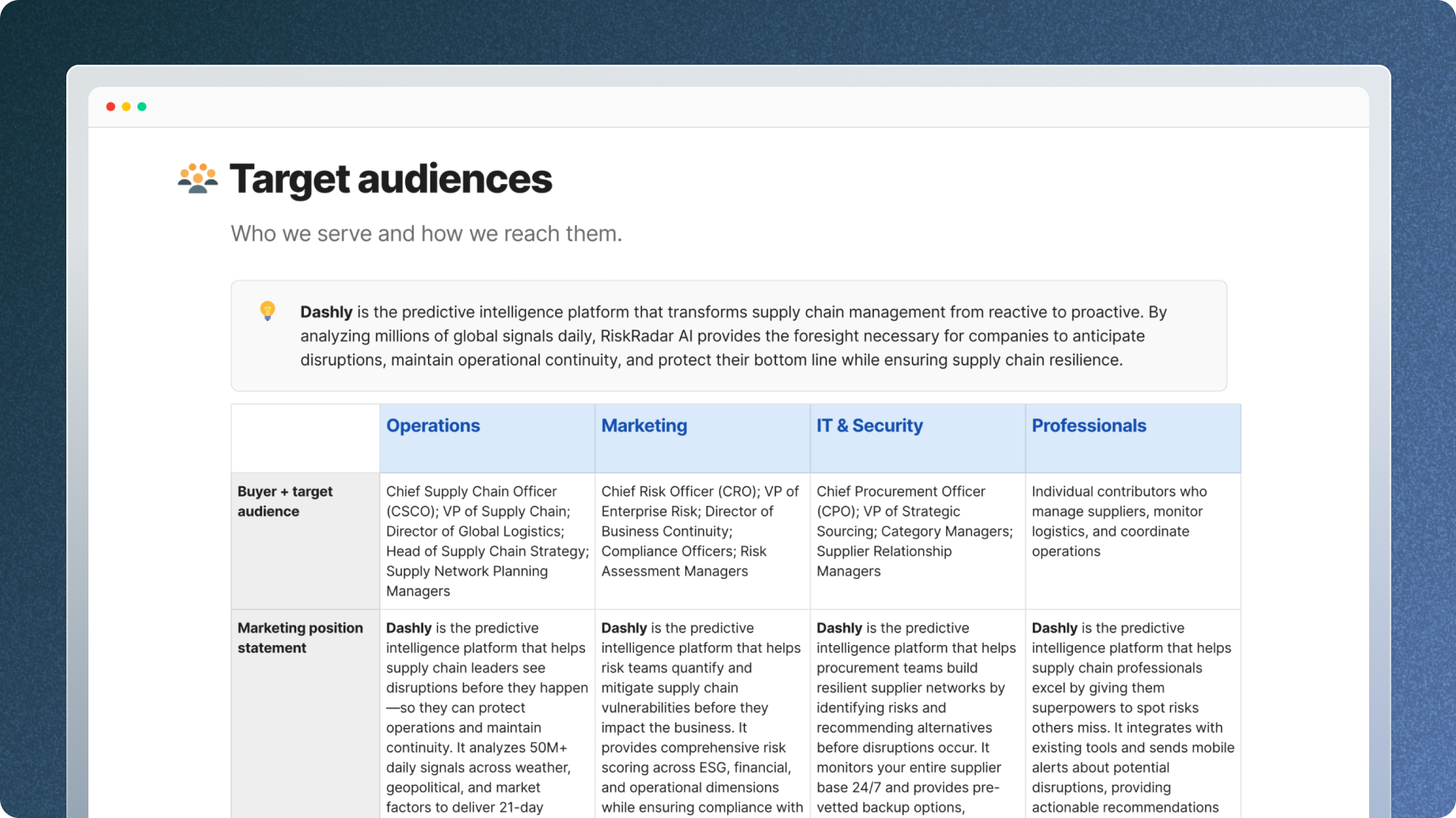
Brand standards
Using docs, centralize your brand style guide, tone guidance, and design standards in one place.
Best practice: Import your style guide and brand tones into Grammarly to deploy these standards proactively wherever your team writes.
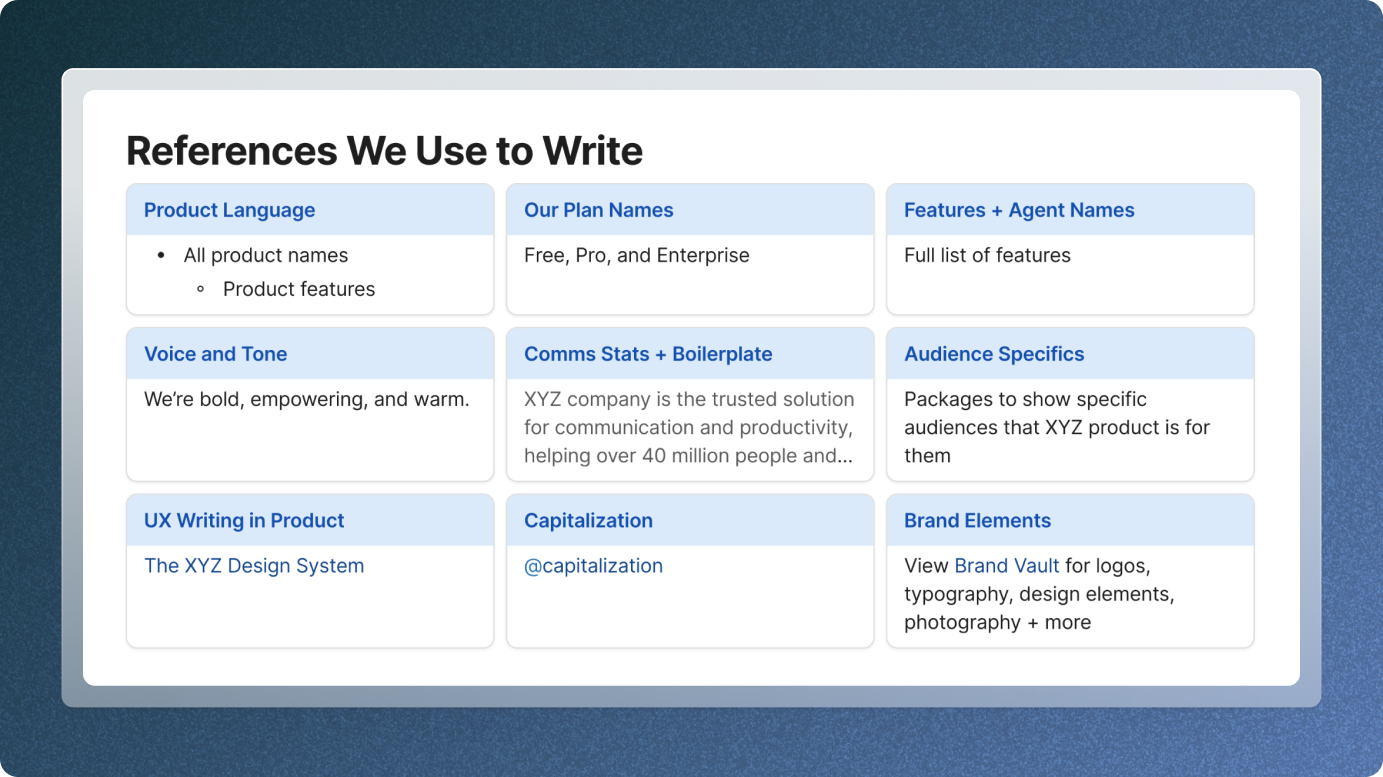
3. Create your pilot project brief
Every project should tie back to the foundational strategy and resources in your team’s home. The best way to do this is by creating a standardized project brief that pulls in key components from your shared context above. For instance, if corporate narrative pillars or persona-based messaging are core parts of your strategy, they should be documented in your team's home and referenced appropriately in every brief.
This approach ensures no project starts from scratch and that every campaign builds as an extension of a single, unified strategy. Once created, you can leverage your hub’s AI assistant to draft briefs faster and then turn them into living documents that stakeholders can easily comment on, update, and reference throughout the project lifecycle.
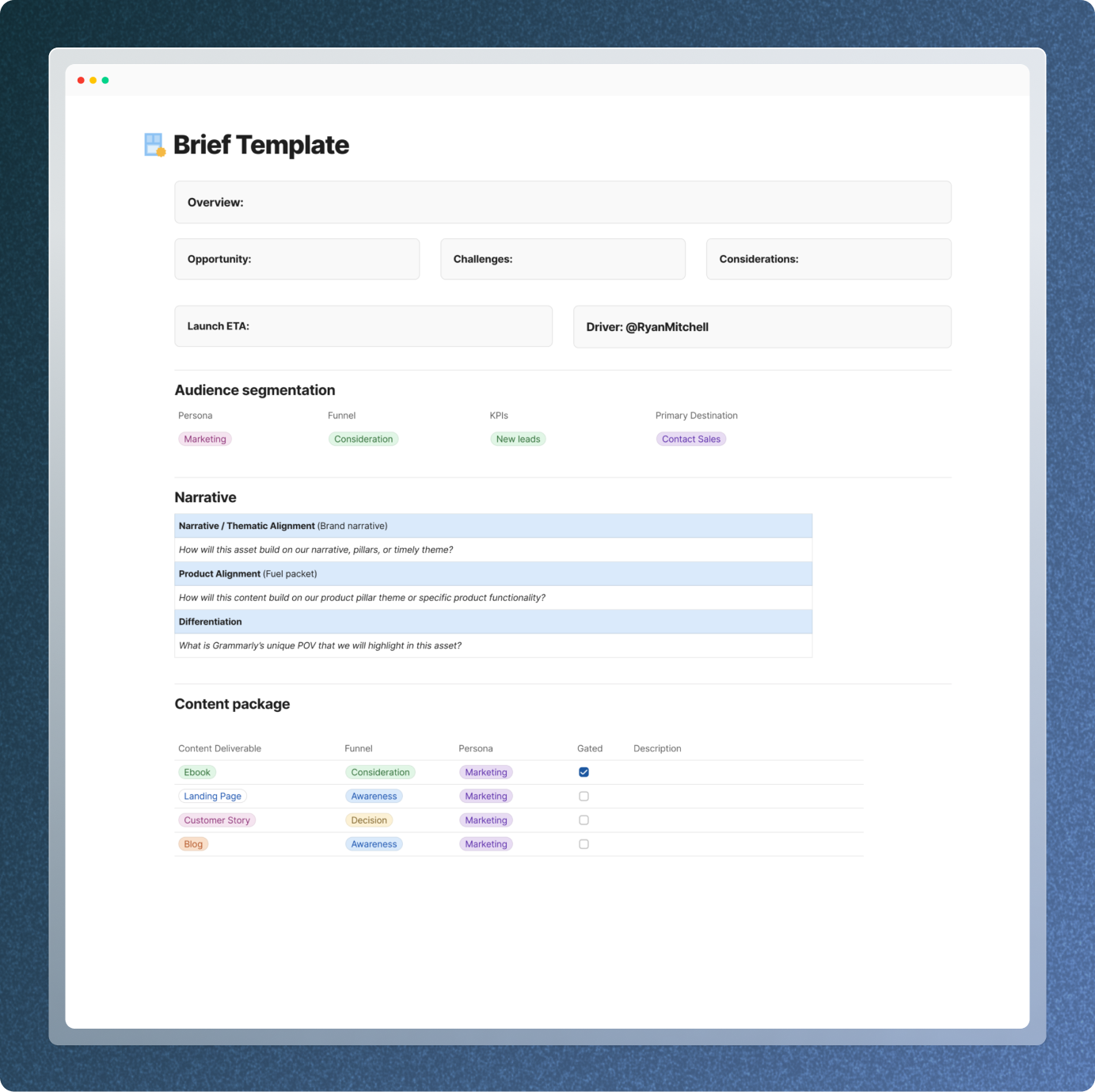
4. Set up your first tracker
Once you’ve identified your pilot team and project, the next step is to determine which elements of the project are most important to track to provide the necessary visibility for meeting launch deadlines but also, just as important, driving real-time alignment. Your hub should make it easy for the team to stay focused on the work that truly drives outcomes.
In this pilot phase, the key is to start simple and actionable. Focus only on the metrics and deliverables that define success—too much detail creates noise and slows adoption. Start lean, then expand tracking as the team gets comfortable and as you learn what drives the most value.
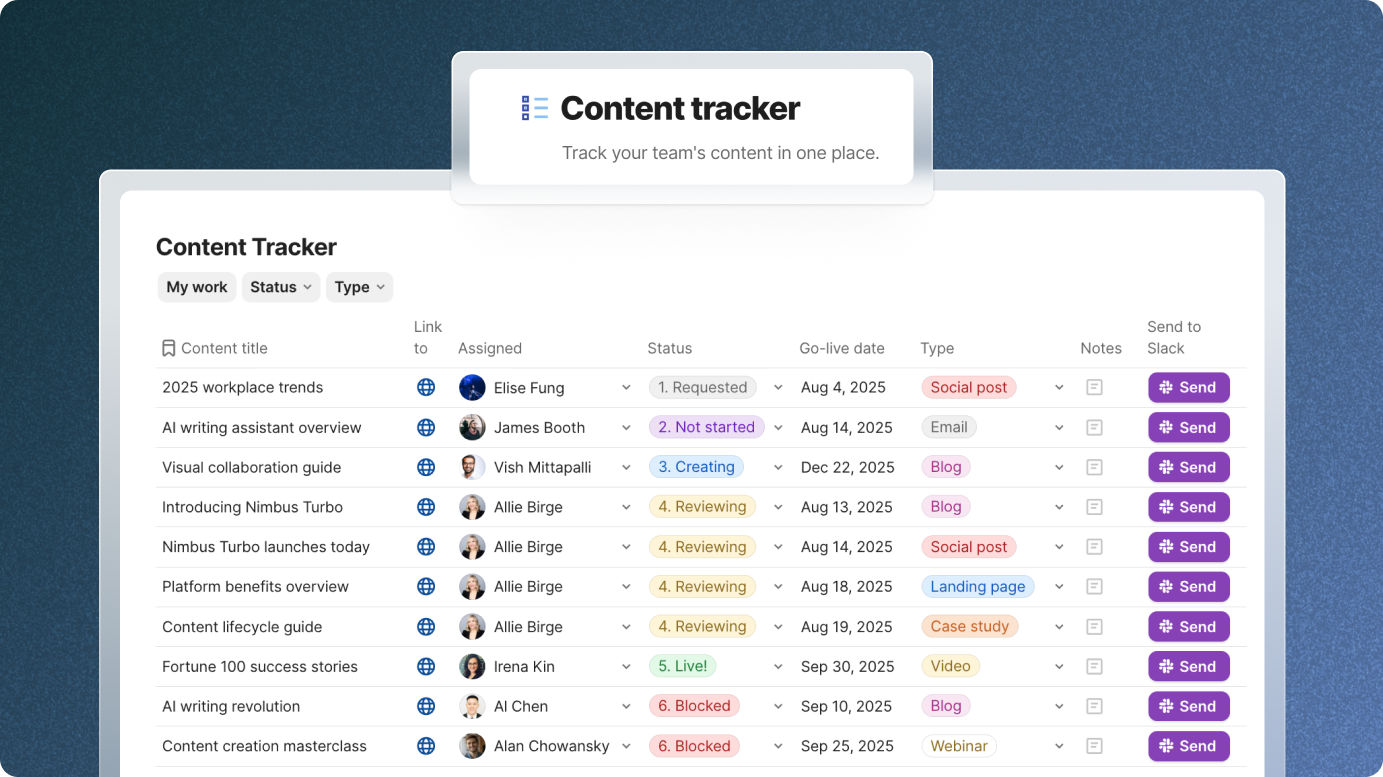
5. Integrate priority tools
Your hub becomes even more powerful when it connects with the tools your team already relies on. Start by integrating one or two priority platforms—ideally ones that the largest number of team members will reference the most. These priority integrations will make the biggest impact to unify your workflow, eliminate context switching for your team, and further position your hub as your team’s central source of truth.
Consider these categories when determining which tools to integrate first:
- Project management tools (Asana, Monday.com, ClickUp) to sync tasks, deadlines, and ownership
- Content creation tools (Figma, Google Docs, Miro) to keep creative assets and copy aligned with strategy
- Analytics platforms (Mixpanel, Looker, Salesforce) to bring performance data directly into planning and reviews
Blueprint MarketingHQ integration video
6. Run productive team meetings
Your hub isn’t just for projects—it should also power your team’s meetings. By grounding your team calls in the same place you manage work, action items can flow directly into ongoing projects, closing the gap between discussion and execution. Using pre-made but customizable meeting templates, you can create agendas in advance, capture notes in real time, and assign action items directly in the hub. This turns meeting notes into searchable references that anyone can revisit with clear documentation that anyone can revisit, reducing the need to rehash old conversations.

How to deploy your MarketingHQ
Bring this all together by launching your hub with a template and following the steps below.
MarketingHQ Team Hub product example
1. Start with a template
Use a pre-built team hub template with briefs, meeting structures, and tracking systems already configured. This accelerates setup and ensures you don’t miss critical components.
Use a pre-built team hub template with briefs, meeting structures, and tracking systems already configured. This accelerates setup and ensures you don’t miss critical components.
2. Share with your team
Click “Share” in the top right and add team members’ email addresses. Send a brief introduction explaining the hub’s purpose and your expectations during rollout.
Click “Share” in the top right and add team members’ email addresses. Send a brief introduction explaining the hub’s purpose and your expectations during rollout.
3. Drive daily adoption
Use the hub to create briefs, run meetings, and track work. Link to your hub in Slack messages, email updates, and calendar invites so it becomes the go-to source for information.
Use the hub to create briefs, run meetings, and track work. Link to your hub in Slack messages, email updates, and calendar invites so it becomes the go-to source for information.
4. Make it your own
Over time, adapt the hub to your team’s workflow. Add or customize pages, adapt how you track work, and organize information the way your team thinks. The most successful hubs evolve with actual usage patterns.
Over time, adapt the hub to your team’s workflow. Add or customize pages, adapt how you track work, and organize information the way your team thinks. The most successful hubs evolve with actual usage patterns.
Transform your marketing team’s collaboration
Bring your marketing operations to life with a centralized team hub. Set up your pilot in less than an hour and watch your team’s productivity and alignment improve within the first week.